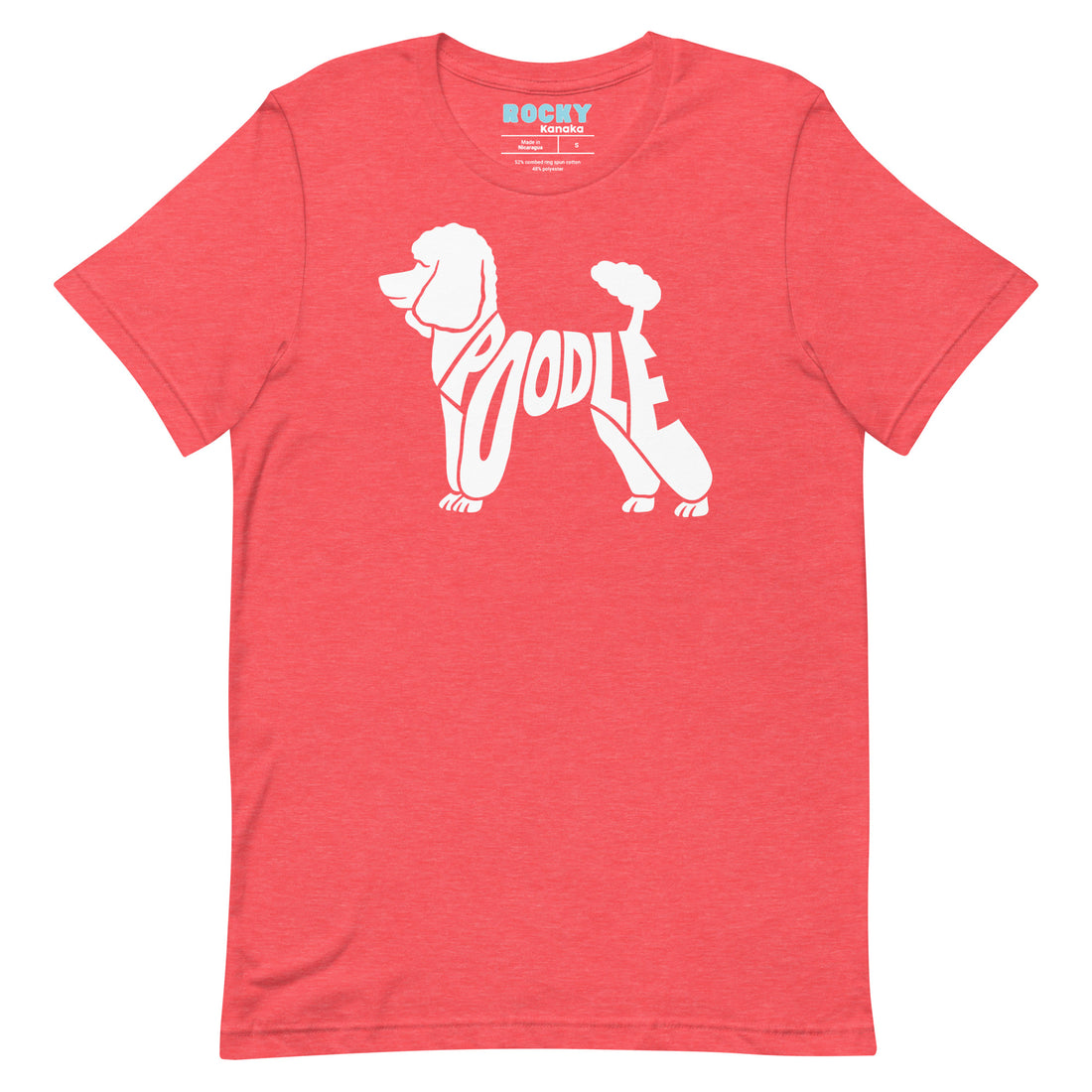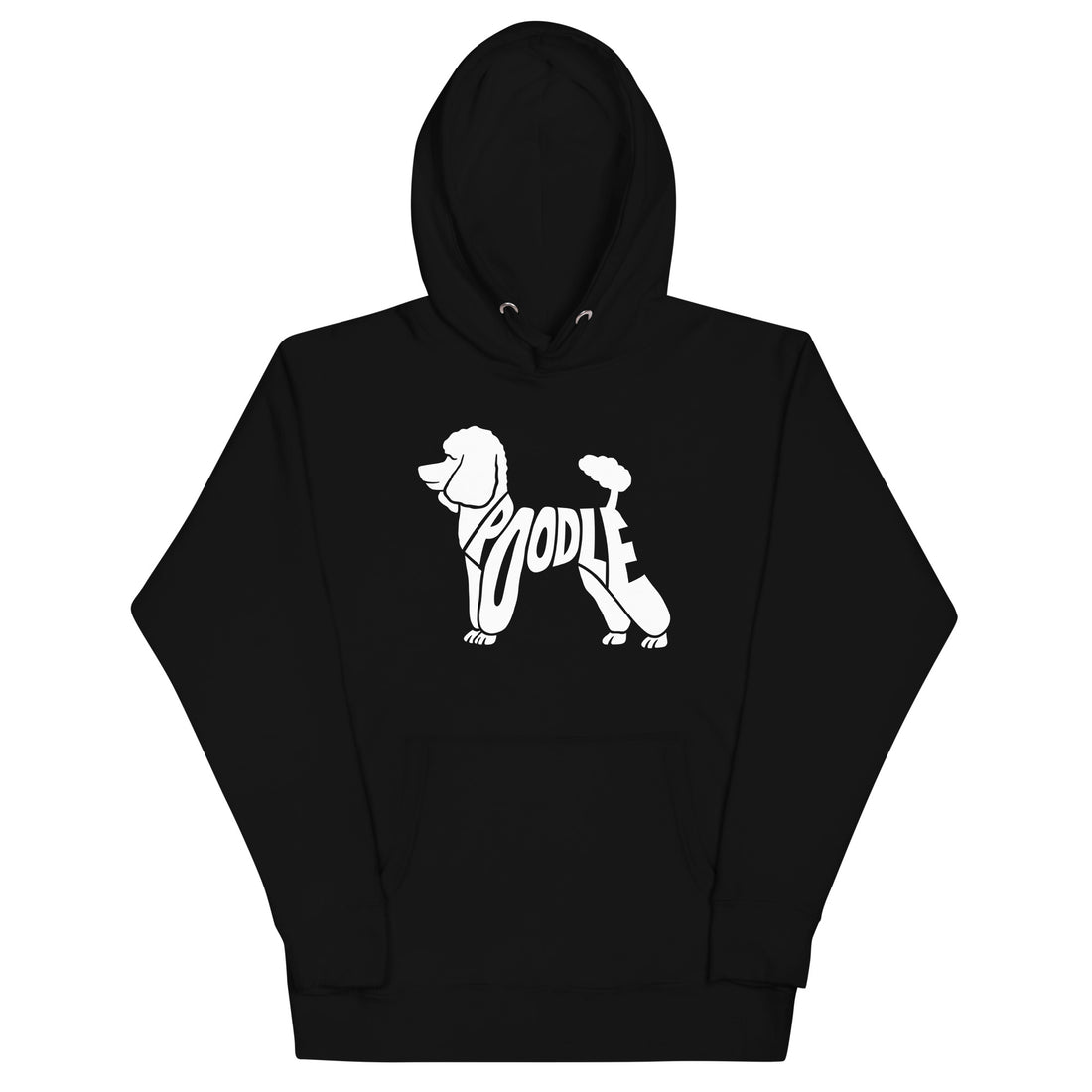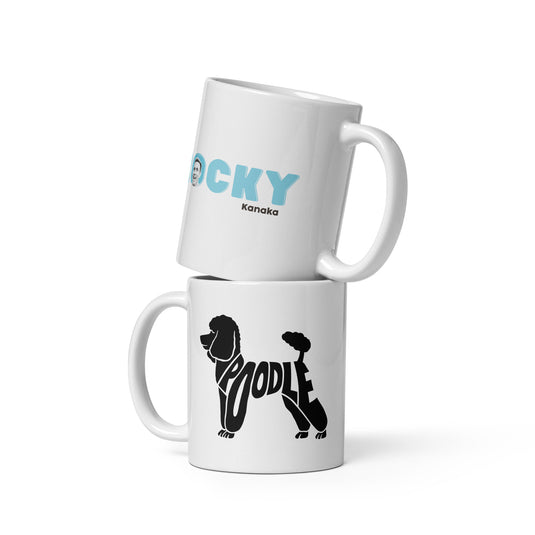Why Get a Doodle When You Could Get a Poodle Instead?
The popularity of “doodle” breeds, such as Labradoodles and Goldendoodles, has skyrocketed in recent years. These adorable cross breeds are known for their charming looks and the promise of being hypoallergenic, making them an attractive choice for dog lovers who suffer from allergies.
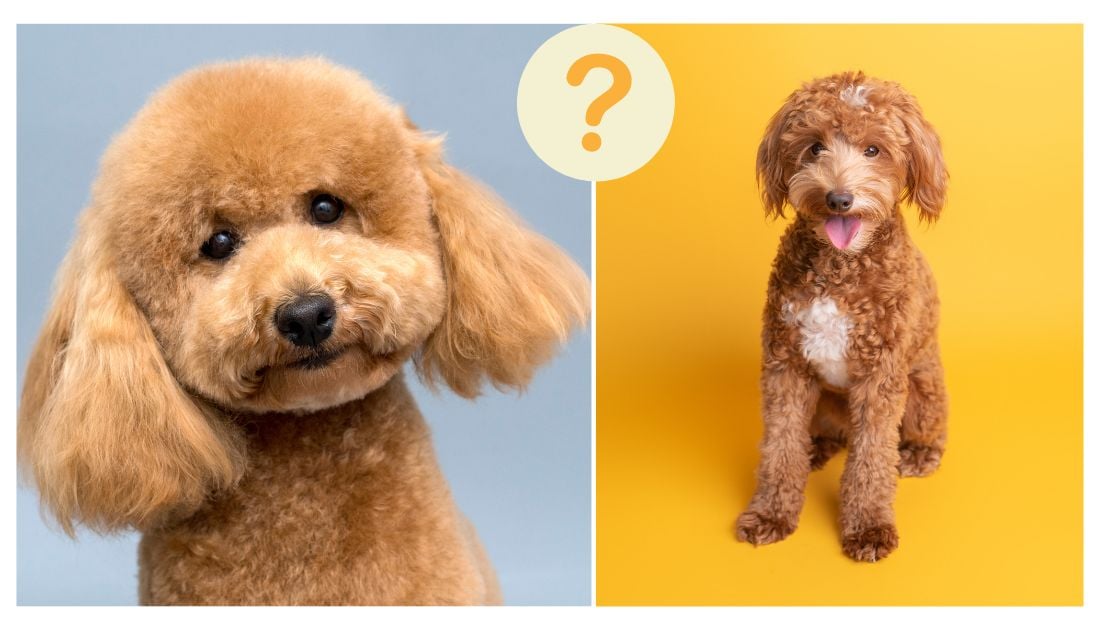
The Hypoallergenic Allure Of The Doodle
Many individuals seeking a hypoallergenic dog turn to doodles with high hopes of finding relief from their allergies. The allure lies in the belief that crossing a hypoallergenic breed, such as a Poodle, with another breed will produce offspring with reduced allergenicity. While this notion holds true in some cases, the reality is far from a guarantee.
Doodles inherit their hypoallergenic potential from their Poodle parent. However, the challenge arises when the other parent in the mix is not a hypoallergenic breed. Labradors, for instance, are often used in Labradoodle breeding, and despite their lovable nature, they have a different coat type and may shed more allergenic dander.
Consequently, the resulting offspring’s coat characteristics become unpredictable, making it challenging to ensure a truly hypoallergenic dog.
Poodles – The Underappreciated Alternative
If what you’re looking for is a goofy hypoallergenic dog, why not just get a poodle?
One common misconception that has plagued Poodles is that they are pretentious and associated with high-maintenance and excessive grooming. Poodles have, unfortunately, received a bad rap as being “prissy frou frou dogs.” However, it’s time to dispel these misconceptions and recognize the Poodle for the remarkable breed it truly is.
Poodles possess a rich history as versatile working dogs. Originally bred as water retrievers, they are highly intelligent, athletic, and adaptable. Poodles excel in various dog sports, including agility, obedience, and tracking. Their impressive trainability and quick wit make them a joy to train and work with, regardless of gender stereotypes or perceptions. Ask any Poodle owner, they can be just as goofy as a doodle!
By opting for a Poodle, you can have the best of both worlds – a dog that embodies the aesthetic qualities of doodles and the unwavering assurance of a hypoallergenic companion.
If you don’t like what Poodles look like, just change up the hair cut and they’ll look just like a doodle.
This is the exact same Poodle. On the left, she has a puppy cut, on the right, a Poodle cut.
What Happened To The Poodle?
Poodles were extremely popular back in the 1960s and stayed as the most popular breed from 1960-1982.
However, their popularity has declined somewhat since then. One reason for this decline could be their reputation for being froufrou, prim and prissy, which may have contributed to their decline in popularity.
However, poodles have recently regained some popularity and have re-entered the American Kennel Club’s top five most popular dog breeds for the first time in nearly a quarter-century.
This reputation may be due to their iconic poodle hair cut which makes them seem a little scary. That trademark cut actually served a purpose. Bred as water retrievers, their coat was shaved down to increase speed.
Despite this, the stereotype of poodles being prissy has persisted in popular culture. Poodle fans will tell you that most people have it wrong when it comes to these loyal pooches. They aren’t prissy, lazy, or meant only for the wealthiest — or vainest — members of society
Here, we’ll explore the world of Doodles—the good, the bad, and the answer to this most pressing question: Why not just get a Poodle instead?
Busting the Myth: Are Doodles Hypoallergenic?
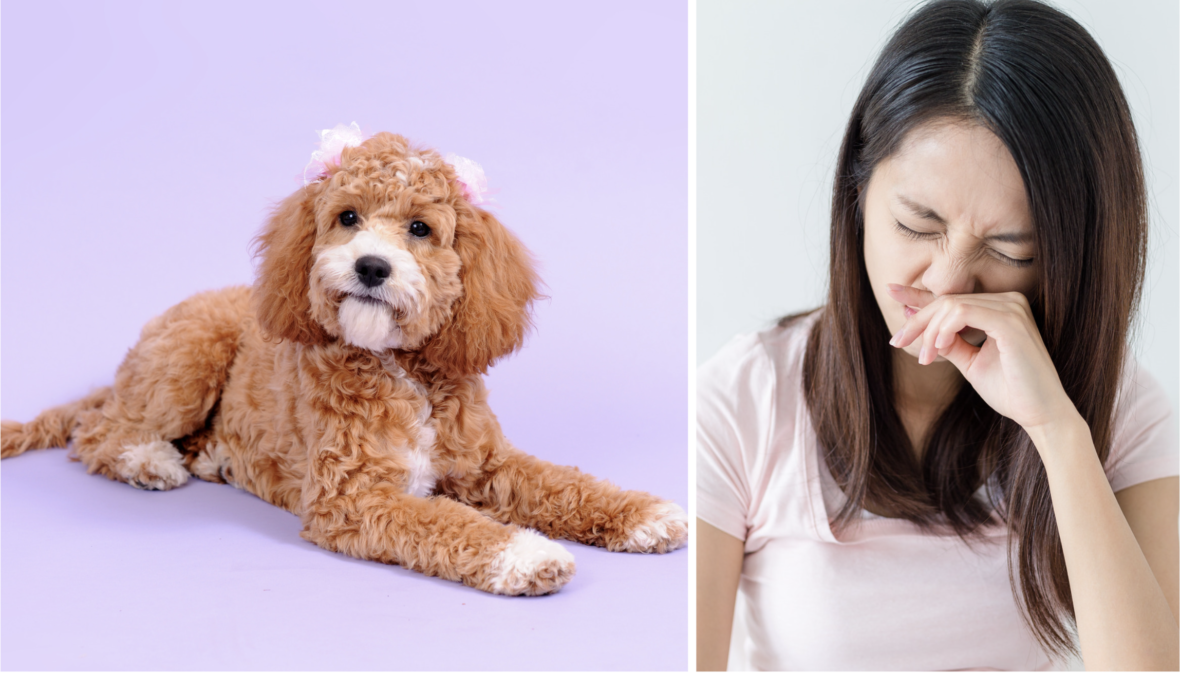
Most Doodle lovers will tell you that their dogs are completely hypoallergenic. If you’re a Doodle hater, you probably sigh when you hear this argument. Here’s why it’s not as sound as most Doodle owners think:
1. Doodles are always a mix of Poodle and a secondary dog breed.
In many cases, the second breed will be moderate or high-shedding, like the Labrador Retriever. By combining the genetics of a low-shedding dog like the Poodle with a dog that sheds more, you essentially dilute their offspring’s ability to be low-shedding and increase the chances of producing a moderate or high-shedding dog.
TLDR: Doodles shed more than Poodles.
2. Even if your Doodle is low-shedding, you can still be allergic to them!
Low-shedding dogs (like Poodles) drop very little fur, and may as a result drop less dander. While this can be helpful if you are personally allergic to dog dander, other people may be allergic to dog saliva or urine.
TLDR: Having a low-shedding dog doesn’t mean you can’t be allergic to them.
It’s also worth noting in this moment that the science is on the side of the Doodle haters. Formal study results have shown that so-called “hypoallergenic dogs” may carry more allergen than non-hypoallergenic dogs and that there was no significant difference in allergen load when comparing homes with hypoallergenic dogs to homes with regular dogs.
100% hypoallergenic dogs that are guaranteed not to trigger allergies simply don’t exist. The myth that Doodles are hypoallergenic probably starts with the original breeder, who was attempting to create a hypoallergenic service dog. Of course, this wasn’t successful, but modern Doodle breeders continue to claim that their puppies are hypoallergenic.
Dog lovers have been incredibly susceptible to the false advertising of Doodles as hypoallergenic. Millions of people, including big-time celebrities have been duped by this lie.
Recently, Pete Davidson came under fire by PETA after purchasing a Cavapoo puppy from a store. Pete responded saying he had been told he could only own a Cavapoo—and no other breed of dog—because it was a hypoallergenic breed. PETA is, of course, a polarizing organization, but anyone who has spent a few moments researching hypoallergenic dogs would know that Pete has been fooled by the Doodle industry.

What’s The Problem with Doodles?
So, other than the fact that they aren’t hypoallergenic as so many breeders claim, why do Doodles get so much hate?
1. Unclear Breed Standards with Unpredictable Results
Most dog breeds have a “breed standard” that breeders use to ensure their dogs are healthy, consistent in looks and size, and temperamentally balanced for the breed. No such standard exists for Labradoodles, Goldendoodles, or any other designer mixed breed, which means “Doodles” are highly inconsistent.
When you buy a Doodle, you often don’t really know what you’re getting. Many Doodle owners report that their dogs are either much larger or much smaller than anticipated, or have completely different fur than advertised by the breeder.
For example, one Reddit user asked “My supposedly “mini” golden doodle is 40lbs at 5 months. How much bigger is he going to get?”
Source: Reddit
Commenters responded, sharing similar scenarios. “My mini was supposed to be 40-45, but has topped out at about 65,” said one comment.
Another response addressed the issue of breed inconsistency: “Our mini is only 24 lbs full grown, but we were told she would be about 35 lbs. Being mixes you really can’t know. They could take after the bigger parent or the smaller or it could skip generations with recessive traits. Really no way to know till they are grown.”
2. Improper Temperament Pairings
It could be argued that mixing the Labrador Retriever with the Poodle makes sense on a temperament label. Both breeds are intelligent, social, affectionate, and highly capable in service dog positions. In essence, the basic personality traits of Labs and Poodles are well-balanced, which increases the likelihood of producing happy, evenly-tempered puppies.
The same can’t be said for the temperaments of, say, Doberman Pinschers and Poodles. Dobermans are high-strung, watchful, often anxious dogs, which clashes terribly with the clingy, human-focused nature of the Poodle. Doberdoodles are, as a resu
lt, more likely to suffer from separation anxiety, reactivity, and nervousness around new people, places, and animals.
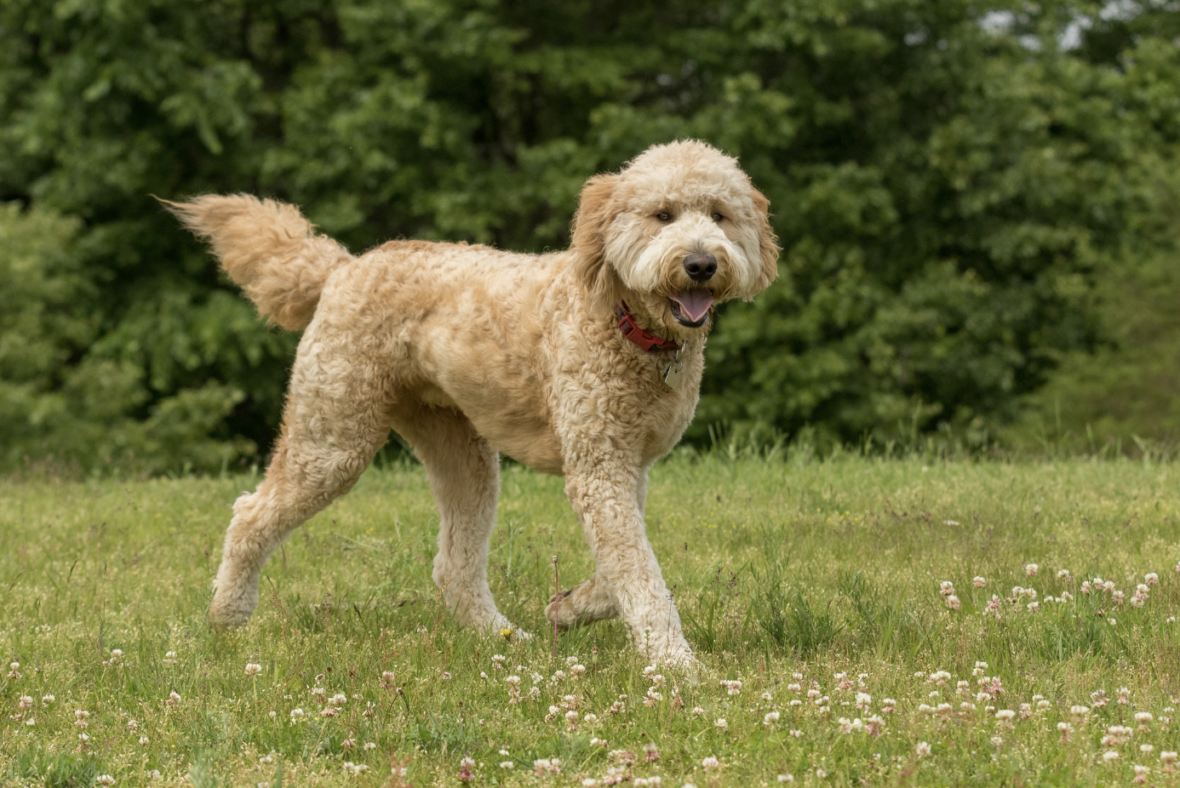
3. Unethical Breeding Practices & Conditions
Factors like choosing appropriate temperament pairings, genetic screening, and breeding to enhance breed health and bloodlines rather than for profit all set ethical breeders apart from unethical ones.
One of the largest issues “Doodle haters” have with the Doodle industry is the questionable practices of the backyard breeders and puppy mills producing these dogs. Exotic “designer” mixes are being produced purely because they will sell without thought put towards whether mixing the breeds will have any benefit for the resulting puppies.
Often, the breeder dogs used to produce designer mixes lack proper veterinary care, are bred more often than is safe for their health, and are deprived of quality of life. Their puppies may be sold early to increase profits, sold to unwitting customers who think they’re getting a designer dog, or discarded if they are unlucky enough to not meet expectations.
4. Shelter Overpopulation
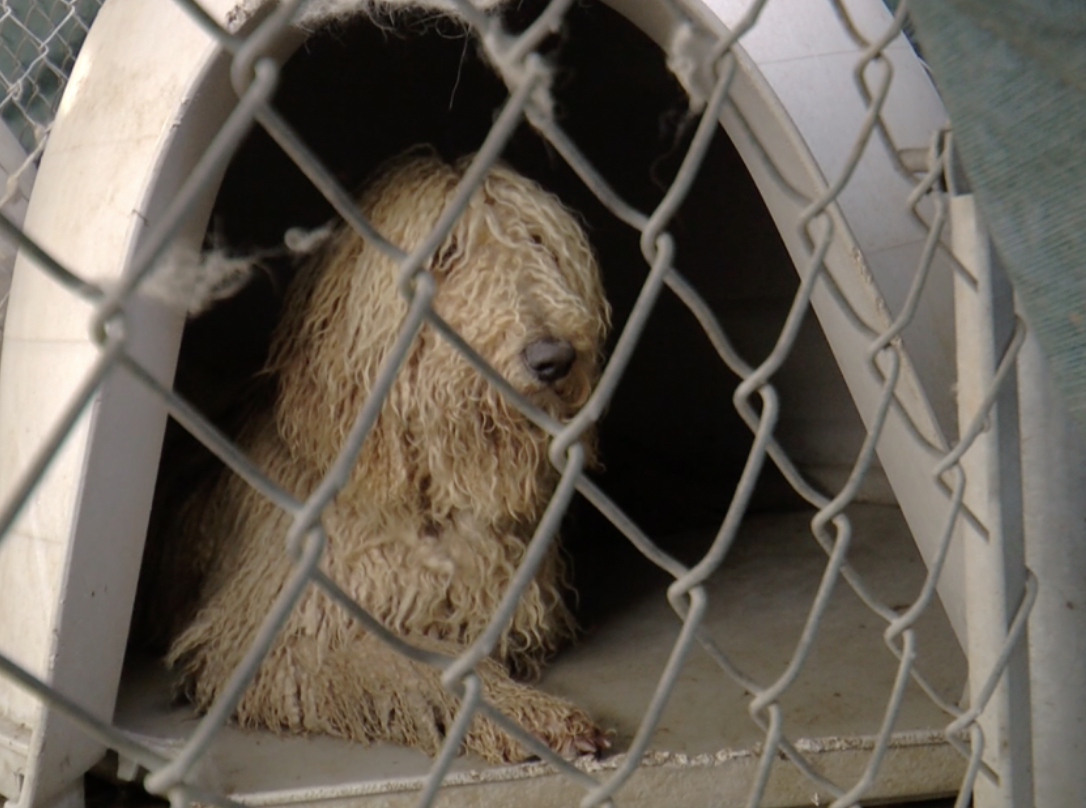
Finally, critics of Doodles point to overpopulation in both local shelters and private animal rescues. This isn’t a new issue, but it has certainly been exacerbated by the enormous wave of Doodle breeders.
“There are hundreds of doodle dog rescues, just like there are Chihuahua rescues, Dalmatian rescues, collie rescues and rescues for any dog that had once ignited the dog-buying public’s thirst for the latest fad,” says an independent writer for Coloradoan. “People bred these dogs with very little knowledge of genetics and weren’t checking for hereditary faults. That hasn’t changed with the popularity of the doodle dog.”
The ASPCA estimates that around 3.1 million dogs enter shelters each year. Of those, around 390,000—more than 10%—are euthanized.
When Did Doodles Become More Popular Than Poodles?
Poodles were once a super popular breed in the US and around the world. Over the past 20 years or so, Poodles have slowly gone out of favor and Doodles have seemingly taken over. But, what does a “Doodle” have that a Poodle doesn’t?
Well, we think it probably boils down to having a really convincing marketing team.
New varieties of Doodle are always the hottest new thing, and the efforts put into flooding social media with these mixes have been enormous. For some, the “Doodle” variety of dog represents a sort of “build your own” dog, where you simply combine breeds so you can pick and choose what qualities your pup will have. In truth, the model of breeding used by Doodle breeders is more like a grab bag where you never know if the results will be good, bad, or just okay.
Poodles, on the other hand, have gone from being a beloved family dog to a strange symbol of elitism and pretentiousness. Considered a “fancy” dog, some people believe the Poodle to be withholding and snooty, the exact opposite of the goofy, fun-loving, family-oriented Doodle.
Of course, this notion is categorically false. According to the American Kennel Club, Poodles rate 5/5 in all of these categories:
- Openness to strangers
- Playfulness
- Trainability
- Being affectionate with family
- Being good with children
While some people might think of Parisian elegance and wealth when they imagine a Poodle, the truth is that the breed really is goofy! Poodles are super playful and were once used as circus performers who eagerly performed tricks, wore costumes, and enthralled audiences around the world.
Poodle vs. Doodle: Which Is Better?
How do Poodle mixes (AKA Doodles) stack up to purebred Poodles?
| Poodles | Poodle Mixes (Doodles) | |
| Size | – Available in 3 sizes- Standardized—sizes are consistent ✅ | – Sizes are confusing and vary between mix types- Not standardized ❌ |
| Health | – Breed clubs require genetic health screenings for breeding pairs ✅ | – No standardized screening practices for Doodle breeders |
| Fur Type | – Low-shedding- Standardized ✅ | – Varies depending on individual- Not standardized ❌ |
| Temperament | – Friendly- Affectionate- Playful- Watchful- Standardized ✅ | – Varies depending on individual- Not standardized ❌ |
| Hypoallergenic | – Considered the “gold standard” of dogs less likely to trigger allergies- Not 100% hypoallergenic ❌ | – Not 100% hypoallergenic ❌ |
Well, sure, maybe Poodles have a lot of pros, but what if you just like the look of a Doodle more than a Poodle?
First, let us remind you that your “Doodle’s” looks might not end up being exactly what you expect. Second, Poodles look almost exactly like Doodles, especially if you don’t give them a Poodle cut!
“It’s the shaved face/feet that people don’t like, I have a mini poodle and I’m one of them,” says a Reddit comment from a Poodle owner. “I keep my boy in a “puppy cut” and he gets mistaken for a mini golden doodle or cockapoo on the regular.”
You can choose to leave your Poodle’s fur the same length all over, let it grow out, or have it groomed in a specific style—it’s 100% up to you! Only one cut makes Poodles really look like Poodles, and that’s easy to avoid.
Conclusion: You Should Probably Get a Poodle
In the end, Poodles have all of the qualities Doodles are theoretically supposed to have, and you know exactly what you’re getting when you choose a Poodle.
Buying a Poodle from a well-respected ethical breeder is worth it, especially if you were considering spending thousands on a “designer” Doodle already.
If you really love Poodle mixes, visit your local shelter, search adoption resources online, or find a private dog rescue that specializes in Doodles! There are tons of adoptable Poodle mixes in need of homes, and that cost less than $2,000.
Relates Articles:
- 69 Shades of Doodles: Discovering the Charm of These Popular Designer Dogs
- Are Poodles Hypoallergenic?
- 6 Best Dog Foods For Poodles That Even The Pickiest of Them Will Love
- 6 Biologically Appropriate Dog Foods for Goldendoodles

